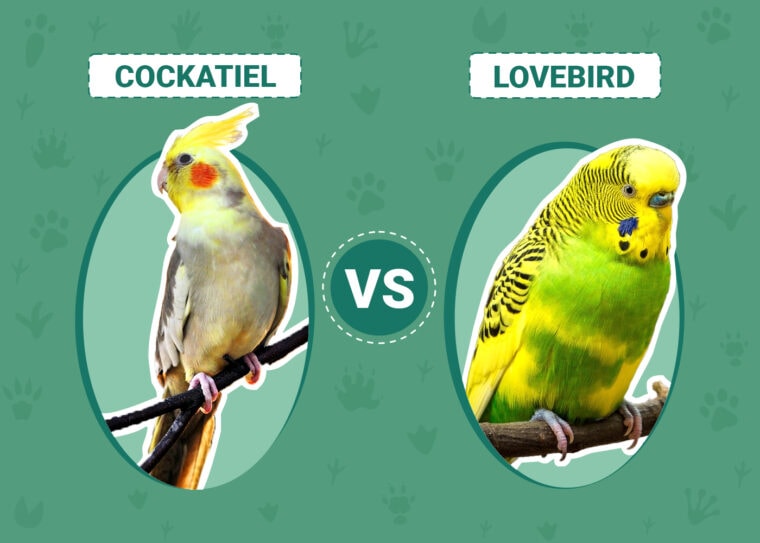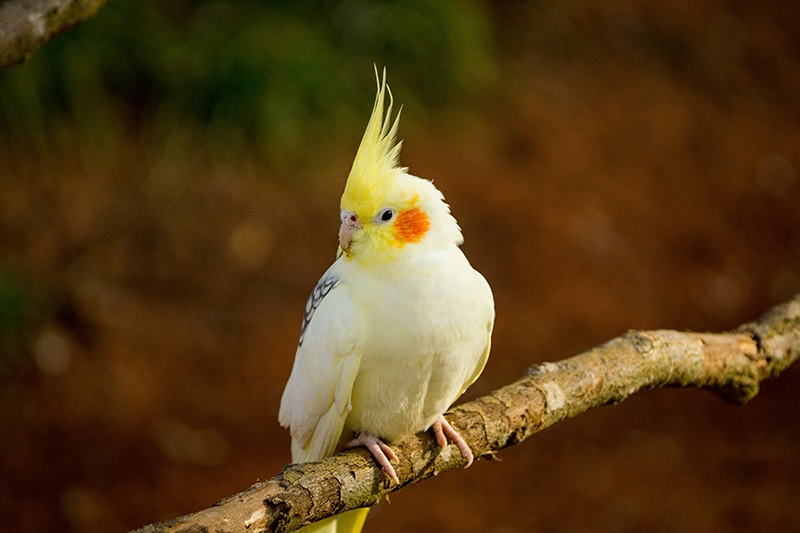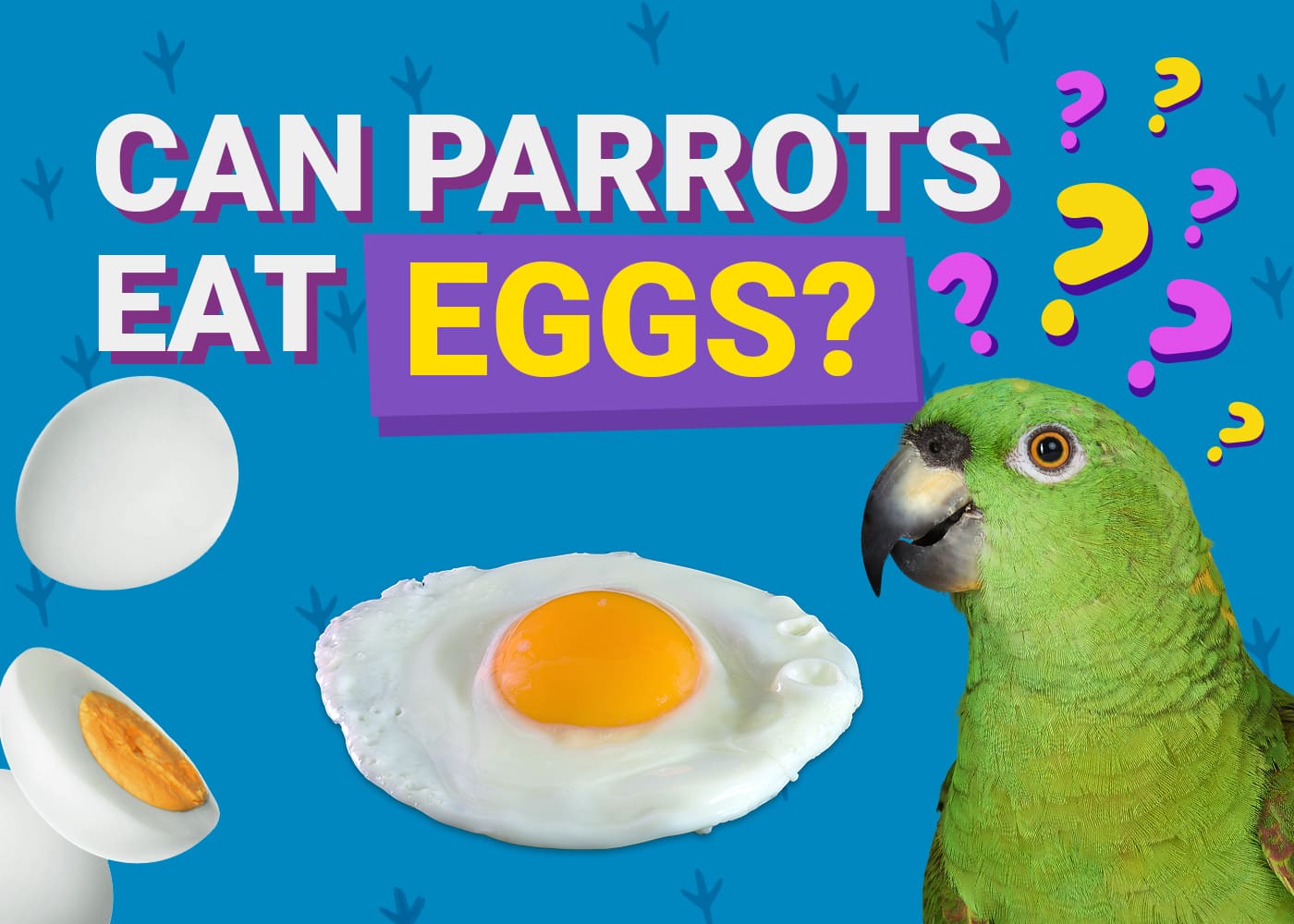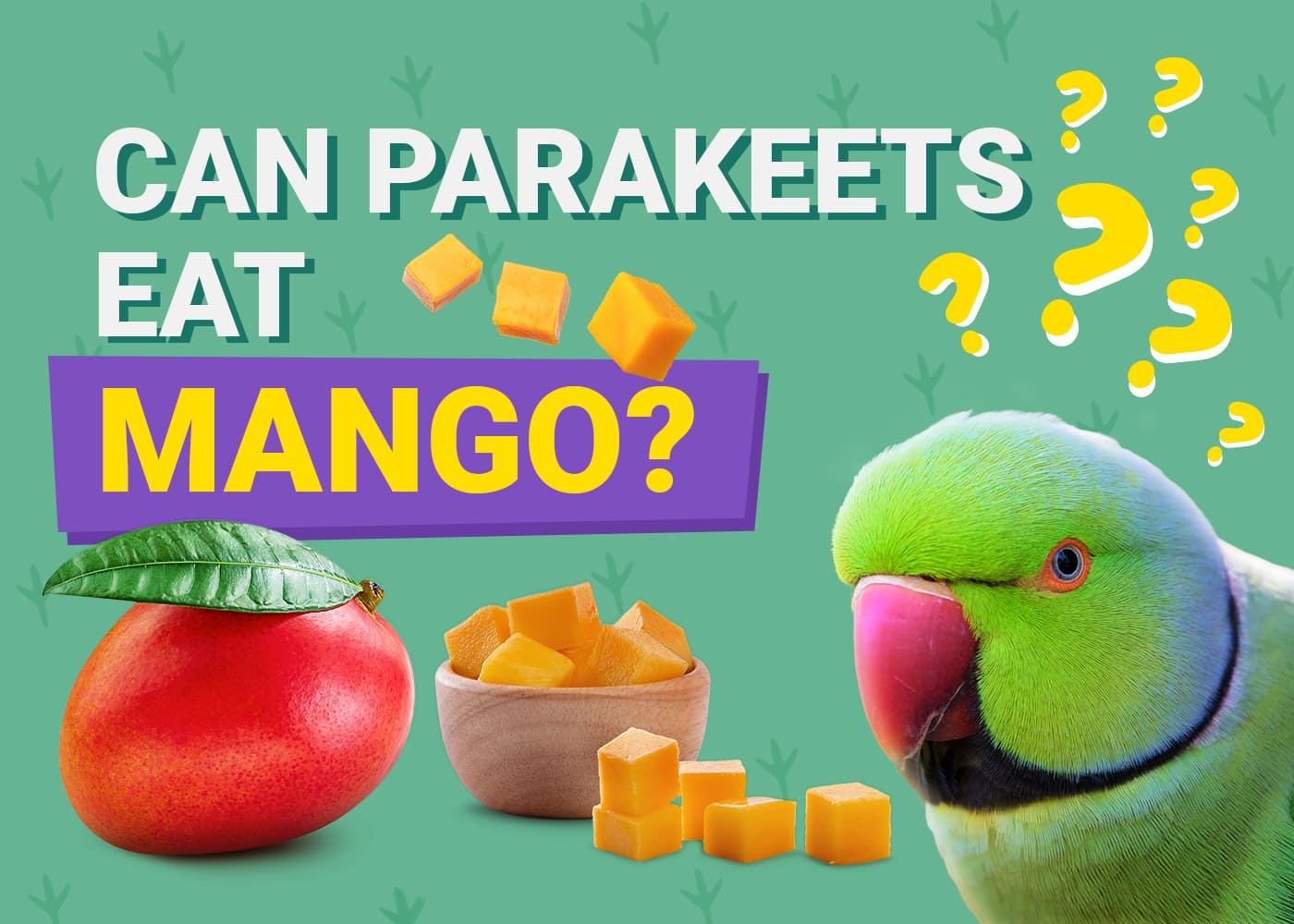
Both are part of the parrot family, and both are kept as pets. Although their colorings are different, both are attractive and colorful birds, too. But the cockatiel and the lovebird differ in a lot of other aspects, and while one might make your perfect companion, the other may not be the best option. Unfortunately, while the cockatiel can do well in a mixed aviary, the lovebird can be quite aggressive with docile species which means that these two types of bird should not usually be mixed.
Below, we consider both parrot species, including their main differences, so that you can choose the one that best fits your family and your home.
Visual Differences

At a Glance
Cockatiel Overview

The cockatiel is a member of the parrot family. It originates from Australia and is considered relatively easy to breed. They are commonly kept as pets, throughout the world, because they are attractive to look at, a decent size, and they can be tamed and affectionate. Some examples of the species will even talk, although this is by no means guaranteed.
Personality / Character
The word that best describes the little cockatiel is gentle. Once tamed, the bird will enjoy being handled and will even butt heads when it wants tickling or scratching. With that said, while they usually enjoy being around their humans and sitting on your hand, they are not cuddly, as such. They will sing in delight when you get home, are eager to get out of the cage and be around you when at home, but this otherwise friendly bird may nip at you if it is untamed and not used to being handled.
Cockatiels are bird-friendly. They are docile birds and not only can they be kept in an aviary with other cockatiels, but they will also mix with other species of birds, without any trouble on their part.
Training

The cockatiel is considered an intelligent bird and can be trained. In fact, it is considered as trainable as many of the large parrot breeds. If you buy or adopt an untamed cockatiel, it is a question of taking your time so that you can build trust.
Give it a few weeks to get used to its new home, before trying to hand tame. Start by talking to your ‘tiel from outside the cage so that it gets used to seeing and hearing you. After some time, your bird will move closer to you when it hears you talking, and this is a decent indication that it is getting comfortable. Use treats to encourage the bird to come to you at the cage bars before eventually holding the treat in your hand.
Cockatiels can often also be taught tricks including turning around, shaking hands, and walking on a tightrope. They will gladly play with a rope toy and spend hours chattering to a bird in the mirror.
Cage and Equipment
A cockatiel needs space to move about. The minimum size of enclosure for this bird should be 2 ft x 1.5 ft x 2 ft tall. Horizontal bars enable the bird to climb using their hooked bills. There is no such thing as a cage that is too big for a cockatiel, though, so offer yours as much room as you can spare. Provide multiple perches and toys and remember that this type of bird does appreciate a mirror as well as items like rope ladders.
Housing a cockatiel isn’t as easy as it sounds. Whether you’re setting up your first cage or looking to upgrade your cockatiel’s home, check out the well-researched book The Ultimate Guide to Cockatiels, available on Amazon.
This excellent resource is packed with information about choosing the ideal perch, selecting the best cage design and positioning, helping your cockatiel adjust to its new home, and much more!
Lovebird Overview

The lovebird is also a member of the parrot family but this small bird is indigenous to Africa. The birds are social and they get their name because they form very close, monogamous pair-bonded relationships that last a lifetime. Although different species of lovebirds do exist, not all are suitable for keeping in captivity. The Black-collared lovebird, for example, needs a specific fig that is native to its homeland, for dietary purposes, and it will suffer if it does not receive this.
Personality / Character
The lovebird is a lively and curious little bird. While they are smaller than the cockatiel in size, they more than make up for this in volume and character. They shriek loudly and often.
Lovebirds are also far more active than the docile cockatiel and as well as giving them ladders and other toys that keep them active, some owners have enjoyed success by providing their energetic little feathered friend a hamster wheel in which to steam around. Tame, handfed lovebirds are affectionate little souls. They will hop on your hand, sit on your shoulder, and enjoy exploring your person. One will hop around in anticipation of being picked up if it is well hand-tamed and enjoys your company.
Lovebirds are often said to be moody and they can also be territorial. They have even been described as being hormonal, so they are considered moodier to look after than a cockatiel.
Another point worthy of consideration is that the lovebird will bond closely with another lovebird, but it can become aggressive around other birds, especially docile birds like the cockatiel. For this reason, it is common to keep lovebirds in their own cage.
Training

While an older cockatiel still can be tamed, it is a lot more difficult to work with an older lovebird that has not had any hand training. As such, you should ensure that an older lovebird is hand-tamed when you get it or get a younger bird. The process of taming a lovebird is similar to that of a cockatiel but you need to be especially careful the first few times you open the cage door because the lovebird may be nervier.
Cage and Equipment
A single lovebird will benefit from a cage measuring 18 x 18 x 18 inches while a pair need a cage that is 24 inches tall and measures 18 x 24 inches. If you can provide a larger cage, this will give them more room to move about and will benefit the birds. These active birds will need three or four perches, dishes for their water and food, and a bath. You can also provide them with bells, ladders, mirrors, and other toys to help keep them entertained.

Which Breed Is Right for You?
The lovebird and cockatiel are similar in many respects. They are small parrot species, both can be tamed, and they are both considered affectionate and friendly little birds in their own way. The cockatiel might be considered more beginner-friendly and is less prone to biting while also being easier to tame and not as noisy. The lovebird is smaller but should not be housed with other species of bird and can make an incredible racket for a bird of such small stature.
See also:
Featured Image Credit: Top – Tiểu Bảo Trương, Pexels | Bottom – Anilsharma26, Pixabay








